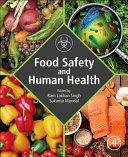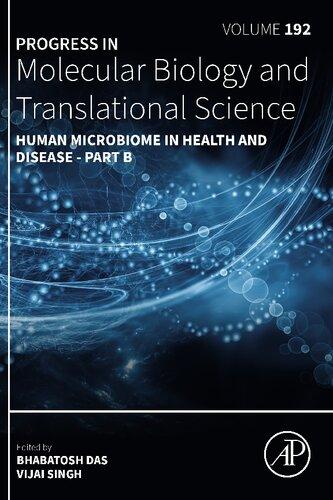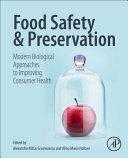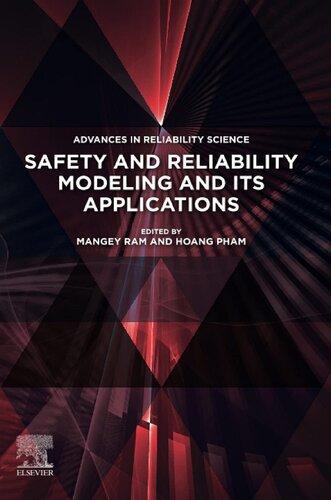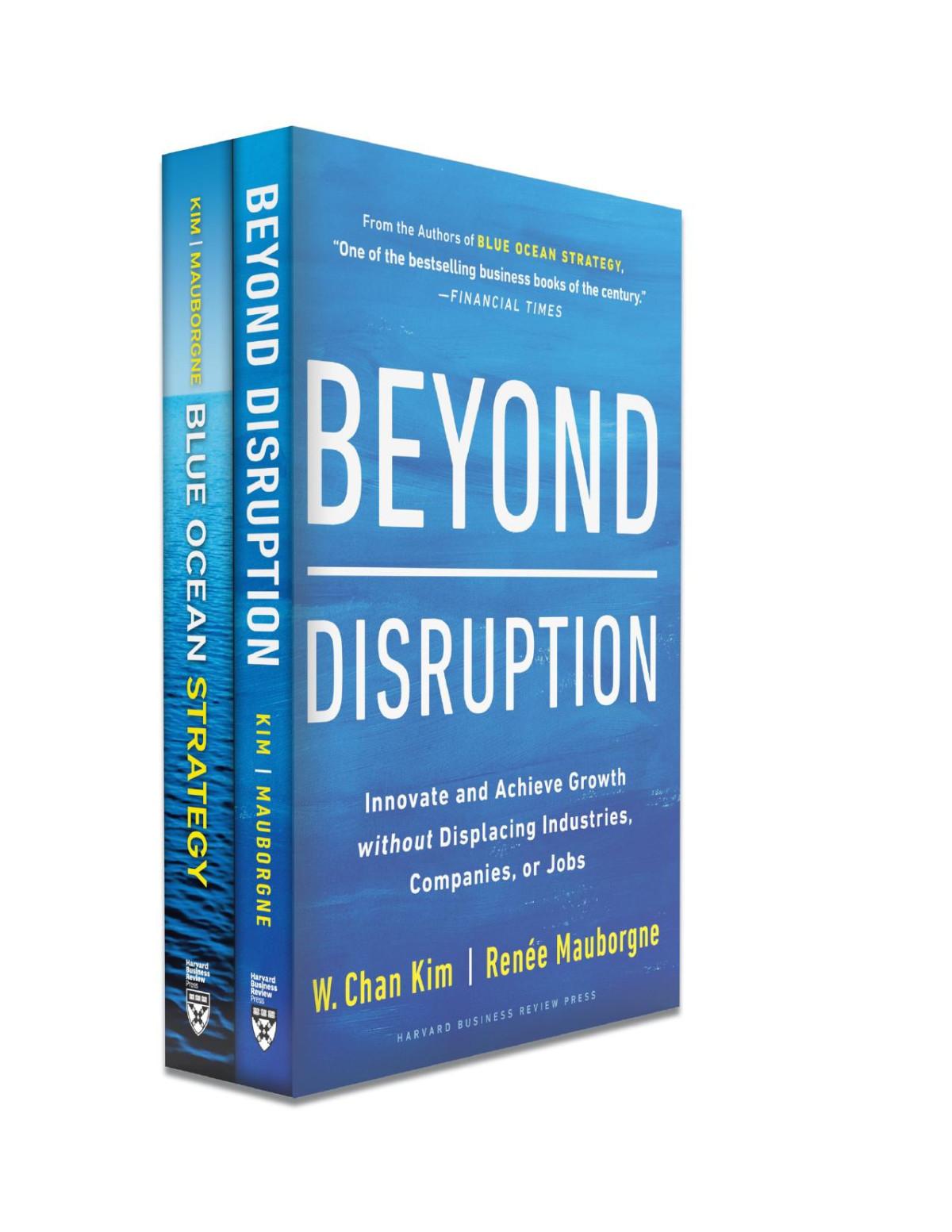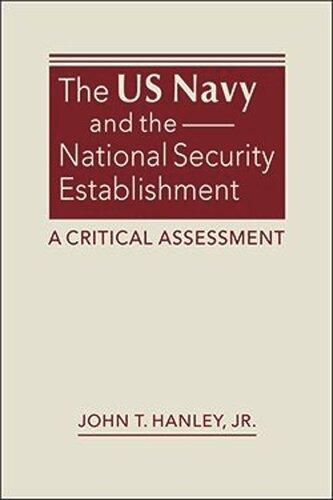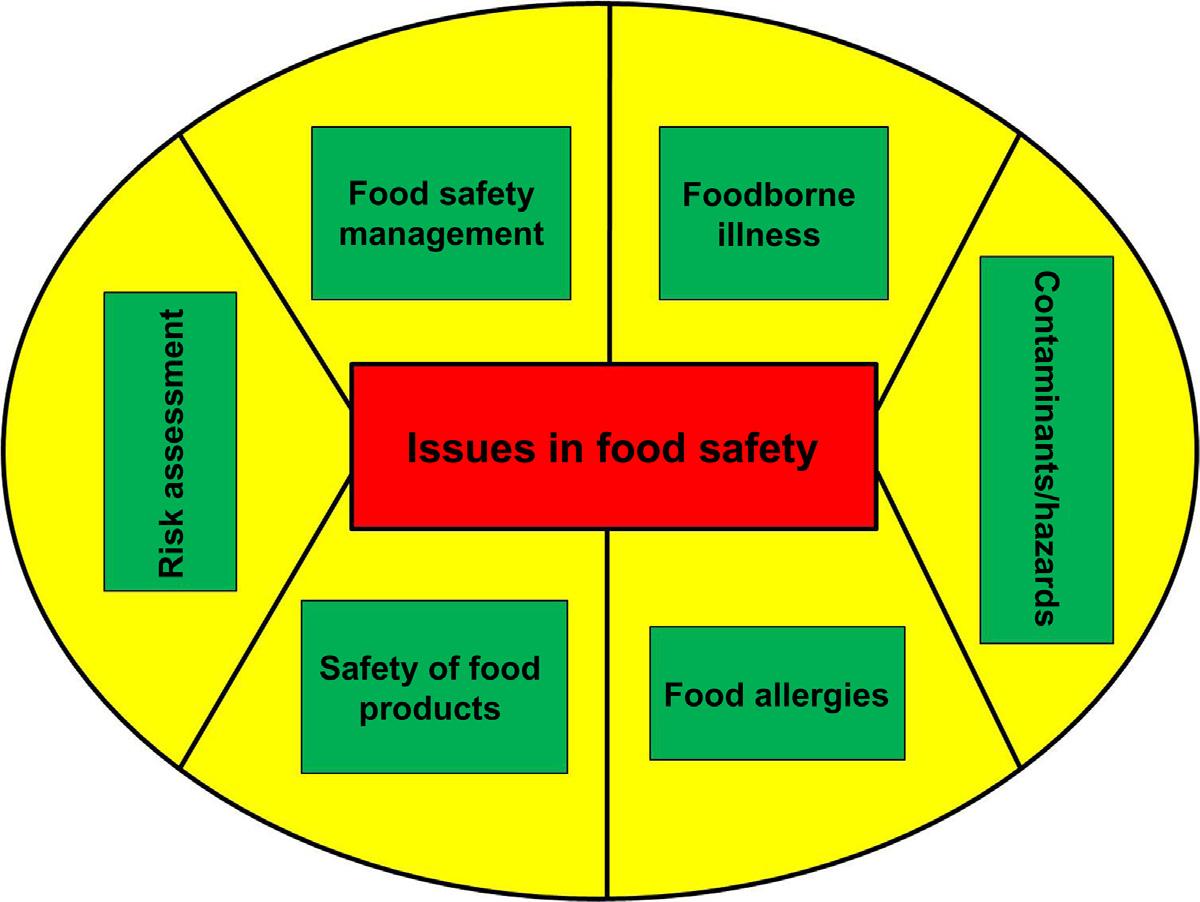Preface
Foodsafetyisanimportantpublichealthissuethatrelatestohumanhealthandeconomicdevelopment.Safefoodcontributestohealthandproductivityandprovidesan effectivemeanfordevelopmentandpovertyalleviation.Peoplearebecomingincreasingly concernedaboutthehealthrisksposedbymicrobialpathogensandpotentiallyhazardous chemicalsinfood.Outbreaksoffood-borneillnessescontinuetobeamajorproblem worldwidewhileinternationaltradeinfoodproductsisincreasing.Accordingtothe WorldHealthOrganization(WHO)estimates,1.8milliondeathsrelatedtocontaminated foodorwateroccureveryyear.Food-bornediseasesnotonlysignificantlyaffectpeople’s healthandwell-being,buttheyalsohaveeconomicconsequencesforindividuals,families, communities,businesses,andcountries.Developingcountriesinparticularareexperiencingrapidchangesintheirhealthandsocialenvironments,andthestrainsontheirlimited resourcesarecompoundedbyexpandingurbanization,increasingdependenceonstored foods,andinsufficientaccesstosafewaterandfacilitiesforsafefoodpreparation.The globalizationofthefoodtradeoffersmanybenefitstoconsumers,asitresultsinawider varietyofhigh-qualityfoodsthatareaccessible,affordable,andsafe,meetingconsumer demand.Adiversityoffoodsinabalanceddietimprovesnutritionalstatusandhealth. Foodsafetyprogramsareincreasinglyfocusingonafarm-to-tableapproachasaneffective meansofreducingfood-bornehazards.Theintroductionofnewtechnologies,including geneticengineeringandirradiation,inthisclimateofconcernaboutfoodsafetyisposing aspecialchallenge.Somenewtechnologieswillincreaseagriculturalproductionand makefoodsafer,buttheirusefulnessandsafetymustbedemonstratediftheyaretobe acceptedbyconsumers.Furthermore,theevaluationmustbeparticipatory,transparent, andconductedusinginternationallyagreedmethods.Newtechnologies,suchasgenetic engineering,irradiationoffood,ohmicheating,andmodifiedatmospherepackaging,can beusedtoincreaseagriculturalproduction,extendshelflife,ormakefoodsafer.
Effectivefoodsafetysystemsarevitaltomaintainconsumerconfidenceinthefoodsystemandtoprovideasoundregulatoryfoundationfordomesticandinternationaltradein food,whichsupportseconomicdevelopment.Theprimaryobjectiveoffoodsafetyissafeguardingthepublichealthbyensuringsafeandgoodqualityfoodsthatdonotcreatean adverseeffectonhumanhealth.Thefoodsafetycanbecontrolledinfoodindustryby developingin-housefoodsafetyandfoodqualityprograms.Food-bornediseasesarea widespreadandgrowingpublichealthproblem,bothindevelopedaswellasdeveloping nationsoftheworld.Thesediseaseshaveagreatimpactontheeconomyofacountry.The factorsthatcontributetofood-bornediseaseincludeimproperstorageoftemperature, poorpersonalhygiene,contaminatedequipment,inadequatecooking,foodfromunsafe sources,etc.Food-bornemicrobialdiseasesaccountfor20millioncasesannually,andtheir incidenceisincreasing.Indevelopingcountries,food-bornediseasescauseanestimated 2.2milliondeathseachyear,ofwhich1.9millionarechildren.Foodshouldbethesource
ofnourishmentforhumanbeingsandnotanopportunityforpotentialpathogens,which cancauseseriousandlife-threateningillness.Foodsafetyisallaboutmakingfoodsafeto eatandfreeofdisease-causingagentssuchasinfectiousmicrobes,toxicchemicals,and foreignbodies.Manyofthemicrobesofcurrentconcernsurviveintheenvironment,in water,onpastures,andinfood,unlessproperprecautionsaretaken.
Itgivesusimmensepleasuretopresentthisbook, FoodSafetyandHumanHealth.This bookisanoutstandingcollectionofcurrentresearchthatintegratesbasicandadvanced conceptsoffoodtoxicologywithfuturedevelopmentprospects.Thebookprovidesthe basicprinciplesoffoodtoxicology,itsprocessing,andsafetyforhumanhealthinorderto helpthestudentsandprofessionalsinbetterunderstandingofrealproblemsoftoxicmaterialsinfoods.Thiswillhelpthemtoaddresstheday-to-dayproblemsreportedregarding foodcontaminationandsafety.Thisbookwillhelpinidentifyingpotentialnew approachestodevelopnewmicrobiologicallysafefunctionalfoodsandsignificantlycontributetodecreasetheincidenceofbacterialfood-borneillnessoutbreaksandgastrointestinaldiseases.Thiswillalsoserveasareferencebookforscientists,researchers,educators, andprofessionalsinthisarea.
ORGANIZATIONOFTHEBOOK
Thebookconsistsof12chaptersthatfocusoncurrentissuesinfoodsafetyandstrategiesforminimizingthefood-borneillness.
Chapter1,CurrentIssuesinFoodSafetyWithReferencetoHumanHealth,dealswith briefintroductionoffoodtoxicology,foodhazards,andtheirimpactonhumanhealth, theneedforfoodtoxicitystudies,andvariousaspectsoffoodsafetyandtoxicologyvisa ` -vishumanhealth.
Chapter2,FoodHazards:Physical,Chemical,andBiological,includesthephysical, chemical,andbiologicalfoodtoxicantsandtheireffectsonhumanhealth.Italsodeals withtoxicantsgeneratedduringfoodprocessingandgeneticallymodifiedfoods.
Chapter3,ToxicityofFoodAdditives,discussescontaminantsinfoods,foodadditive safetyregulations,toxicityoffoodadditives,toxicologicalevaluationoffoodadditives, invitrogenetictoxicitytests,invivogenetictoxicitytests,needofadvancementsin toxicitytesting,andnewtechnologiesintoxicitystudies.
Chapter4,FoodAllergies,coversfoodallergyandassociatedcomplexity,emerging problems,andrecentrecommendationsassociatedwithfoodallergy,allergensandtheir types,immunologyoffoodallergy,associatedfoodallergyconditions,foodallergy versusfoodintolerances,precautionsforfoodallergy,diagnosisforfoodallergens, guidelinesformanagementoffoodallergies,andfoodlabeling.
Chapter5,SafetyofMilkandDairyProducts,highlightsmilk-bornediseases,lactose intolerance,sourcingofmilkanditsproteins,milkallergy,antibioticresiduesinmilk, heavymetalsandotherpollutantsinmilk,adulterationofmilk,artificialcow’smilk, plant-basedmilk,syntheticmilk,organicmilk,A1 A2milk,etc.
Chapter6,HazardsandSafetyIssuesofMeatandMeatProducts,includessourcesof contaminationatdifferentstagesofproduction,hazardsassociatedwithmeatandmeat
products,managementandcontrolofhazardsassociatedwithmeatandmeatproducts, andmeatsafetyandhumanhealth.
Chapter7,SafetyofFishandSeafood,focusesonbacterialcontaminationandnaturally occurringtoxinsinfishandseafoodproducts,fishandseafoodproduct borneparasitic diseases,detectionofpathogensandspoilageoffishandseafoods,preservationand packaging,antimicrobialcompoundsusedinfishandseafoodproducts,andcontrolof pathogensintheseproducts.
Chapter8,MicrobialEnvironmentofFood,describesthemicrobialfoodenvironment, extrinsicfactorsaffectingmicrobialgrowth,intrinsicfoodfactorsandmicrobial physiology,andgrowthkineticsfactors.
Chapter9,SafetyofWaterUsedinFoodProduction,illustratesresourcesofwaterused infoodproduction,storageandpreservation,water-bornefoodcontaminants,health hazardsinwaterandfoodcontamination,watertreatment,andsoilandwaterquality.
Chapter10,SafetyofFreshFruitsandVegetables,describessourcesofcontaminationin fruitsandvegetables,deterioration,spoilageandpost-harvestlosses,causesofspoilage infruitsandvegetables,developmentofbiopreservativesforfresh-harvestproduce, strategiesforsafetyoffruitsandvegetables,andproblemsinnaturalproducts applications.
Chapter11,UtilityofNanomaterialsinFoodSafety,discussesuseofnanomaterialsin foodprocessingandpackaging,nanomaterialsinsmart/active/intelligentfood,its utilityinpolymernanocomposites,nanomaterialsasantimicrobialagents, nanomaterialsinfoodpathogensdetection,nanomaterialsforprotectionfromfood allergens,nanomaterialsinheavymetalsdetectioninfood,nanomaterialsvis-a-visfood safetyissues,aswellaschallenges,perspectives,andhealthrisks.
Chapter12,InternationalLawsandFood-BorneIllness,describesfood-borneillness, agentsfornonbacterialfood-borneillness,food-borneillnessduetoagricultural pesticidesandinsecticides,food-borneviralinfections,fungiandmycotoxins, helminths,protozoa,andinternationallawsrelatedtofoodsafety. RamLakhanSinghandSukantaMondal
FOODBORNEDISEASES
Microorganismsaredefinedasmicroscopiclivingorganismsthatoccurubiquitouslyin theenvironment.Althoughsomeareharmless,somearevirulentandcouldcauseinfections.Theinfectionsareduetoseveralfactorsincludingviolationofcertainbasicfood hygienicpractices.Forexample,foodbornediseases(FBDs)arecausedbymicroorganisms ortoxinstransmittedthroughperson-to-person,animal-human,orhuman-animalcontacts andthroughcontactwiththeenvironmentsuchasthroughhuman-to-surfaceorthrough equipment.Transmissionsofinfectionsarerecordedtoeitherbedirectlyorindirectly fromfoodand/orwater,which,inmostcases,actasvehiclesforinfection.Contamination byfoodpoisoningagentscanoccuratvariousstagesduringthefoodchaininrawproducts,priortoharvesting,duringslaughter,orinprocessingorascross-contaminationin thekitchenbythefoodhandlers.TheCentersforDiseaseControlandPrevention(CDC) furtherrecordedthateatingfoodcontainingpathogensortheirtoxins(poisons)isthe leadingcauseoffoodborneillness.TheCDCfurtherstatedthattherearefourtypesof microorganismsthatcouldcontaminatefoodandcauseFBDs:bacteria,viruses,parasites, andfungi.TheNationalRestaurantAssociationhasrecordedthenutrientsthatsupported thesemicroorganismstogrowincludingfood,acidity,temperature,time,oxygen,and moisture.Almostallofthesearederivedfromfoodsthathumansconsume.Accordingto theWorldHealthOrganization(WHO),foodborneillnessesarereporteddailytheworldwideinbothdevelopedanddevelopingcountries.Furtherreportsindicatedthatillnesses causedbycontaminatedfoodconstituteoneofthemostextensiveissuesandisaprimary driverofdecreasedmonetaryprofitability.TheprevalencerateofFBDshasraisedmuch concern,sincethemagnitudeoftheproblemwaspreviouslyunknownduetolackofreliabledata.AccordingtoWHO,FBDshaveincreased,andevenmorechallengingisthe reemergenceofdrug-resistantmicroorganisms,whichareviewedasabigthreattothe hospitalityindustry.AccordingtotheCDC, Escherichiacoli 0157,H. Listeriamonocytogenes, and Salmonellaenterica arethreeoftheeightknownpathogensthataccountforthevast majorityofreportedFBD,hospitalizations,anddeathseachyear(Sonnieretal.,2018).For example,outbreaksofSalmonellosishavebeenreportedfordecades,butwithinthepast 25yearsthediseasehasincreasedinmanycontinents.
Salmonella
Infectionsareusuallytraceabletovariousfoodproductsderivedfrommeat,eggs,milk, andpoultry.Although Salmonella traditionallyisthoughtofasbeingassociatedwithanimalproductsinthepast,freshproducealsohasbeenthesourceofmajoroutbreaks,particularlyrecently. Salmonella infectionscanoriginatefromhouseholdpetscontainingthe bacteria;improperlypreparedmeatsandseafood;orthesurfacesofraweggs,fruits,or vegetablesthathavenotbeenadequatelydisinfected.InEuropeandotherWesterncountries, Salmonella serotype enteritidis (SE)hadbecomethepredominantstrain(Boyceetal., 1996).InAustralia,Canada,theUnitedStates,Europeancountries,andSouthAfrica,infectionswith E.coli serotype0157:H7arereportedtobeamajorcauseofbloodydiarrheaand
acuterenalfailure(MotarjemiandKaferstein,1998).Outbreaksoftheseinfectionsareassociatedwithbeefconsumptionandweresaidtobefatalparticularlyinchildren.Many developednationshaveencounteredflare-upsofillnessesbecauseofrecentlyperceived foodbornepathogens,forexample, E.coli 0157:H7, Campylobacterjejuni,and L.monocytogenes. Campylobacter and Vibrioparahaemolyticus,whicharethemostcommonpathogensin fish,aremostprobablytransmittedinthemarketorwhilecooking,accordingto Adams andMoss(2000).Othercontaminantslikepesticideresiduesorenvironmentalchemicals arealsoreportedinfruitsandvegetables.Examplesincluded Bacillus, Clostridium,and L. monocytogenes,whicharesaidtobeintroducedfromthesoil,aswellasvirusessuchas rotavirusandbacteriaincluding Shigella, Salmonella,and E.coli.Theproblemisnotlimited todevelopingcountriesalone.Studiesinindustrializednationsevaluatedthateveryyear, 5% 10%ofthepopulaceexperiencedFBD.Inmanycountries, Salmonellaenteritidis iscited asthepredominantpathogen,andpoultry,eggs,andeggproductsareidentifiedasthe majorsource.Globally,about60% 80%ofpoultryareaccountedtobecontaminatedwith S.enteritidis whichwasmostlyassociatedwithdairyproductsbeef,poultry,andeggs.In developingcountries,inLatinAmerica,Asia,andAfrica,therateofinfectionhasbeen lessdocumented,yetthesecountrieshavebornethebruntoftheproblemduetothepresenceofawiderangeofFBDs. Salmonella and Shigella areconsideredasmainpathogens responsibleformostofthefoodbornediseasesandhadbeenlargelyassociatedwithdiarrhea,abdominalpains,nausea,andvomiting(MotarjemiandKaferstein,1998).Although virusesdidnotgrowonfood,rawfruitsandvegetableshavebeencitedtoprovideavenuesforinfection.
Campylobacteriosis
Thegenus Campylobacter includesanumberofspecies,but C.jejuni and C.coli are mainlyresponsibleforhumanenterocolitis(Pal,2007). Campylobacter isrecognizedasone oftheprincipalcausesofhumanacutegastroenteritisworldwide(Allos,2001;Pal,2005). C.jejuni represents80% 90%ofentericsicknesses. Campylobacter speciesarepartoftypicalintestinalmicrofloraofwildanimals,livestock,andbirds.Animalsutilizedinproductionoffoodincludingpoultry,swine,cattle,andsheeparetheprimaryreservoir(Blaser, 1997).Thefamilypets,forexample,dogs,cats,andbirds,areadditionalanimalreservoirs. Inspiteofthefactthatdischargeof Campylobacter isnotrelatedtomanifestationsinpoultry,diarrhealsicknessesaredepictedinmammalianpetsanddomesticatedanimals,and thisaddstothecontaminationofsurfacewater.Ingestionofcontaminatedwater,interactionwithcolonizedpets,especiallypuppiesandkittens,andconsumptionofunpasteurizedmilkorundercookedpoultryormeatareallassociatedwithhumandisease(Pal, 2007). Campylobacter isresponsibleforabout5% 14%ofalldiarrhealsicknessesworldwide(Anon,2000a,b).
BrucellosisandOtherPathogens
BrucellosisisanotherFBDthathasraisedconcern.Itoccursworldwide;however,in NorthAmericaandWesternEurope,incidentshavebeenreportedtohavedecreaseddue tostrictsurveillanceandtheapplicationofthehazardanalysisandcriticalcontrolpoint (HACCP)system.However,thediseasestillremainsanimportanthealthprobleminthe
Mediterraneancountries(Egypt,Greece,Italy,Morocco,andTunisia),theMiddleEast (Iraq,Iran,andSaudiArabia)Mexico,Peru,andsomeregionsofChinaandIndia. V.parahaemolyticus islistedasanotherpathogenthatcausesacutegastroenteritis.Indeveloping countries,especiallyinAfrica,themicroorganismconstitutesagroupofpathogensthat causedpersistentdiarrhea.Thisgroupincludes Giardialamblia, Cryptosporidium sp.,and Entamoebahistolytica. Thesepathogensmainlyaffectedchildrenandpeoplewithimpaired immunity.Rawanduncookedmeatandvegetablesaremajorroutesfortheirtransmission. Otherparasitestransmittedthroughrawmeatincluded Trichinellaspiralis, Taeniasolium, and Taeniasaginata (Mensah,2002).ThemostrecentFBDistheavianinfluenza.According to WHO(2005),thevirus,whichattacksbirds,ishighlypathogenic.Theflustartedin Asia,movedtoEurope,andmorerecentlymovedtoAfrica.Itwasreportedthatthevirus infectedhumanbeingsthroughcontactwithinfectedliveordeadpoultry.Exposuremay havealsooccurredwhentheviruswasinhaledthroughdustandpossiblythroughcontact withcontaminatedsurfaces.Theavianfluviruswasfoundintherespiratoryandgastrointestinaltractsofinfectedbirdsandnotinthemeat.Regardless,accessibleinformation demonstratedthatprofoundlypathogenicviruses,forexample,H5N1strain,mayhave beenspreadthroughmarketinganddistributionchannels,sincelowtemperaturewasconduciveforviruses.Availabledatafurtherindicatedthatthevirussurvivedinpoultry droppingsforatleast35daysatlowtemperatureof40 C,whileat37 C,itcouldsurvive for6days(WHO,2005).ItwasalsonotedthatH5N1wasnotkilledbyrefrigeration. FurtherreportsindicatedthattheeggscouldcontainH5N1virusbothontheshellandon theinside(whiteandyolk).Asaresult,itisrecommendedthateggsfromareaswith H5N1outbreakarenotsupposedtobeconsumedraworpartiallycooked(runnyyolkfor breakfast).Inlinewiththis,cookedpoultryissupposedtobeserved“pipinghot.” Althoughthereisnoevidenceindicatingthatindividualshavebeencontaminatedwith H5N1infectionafterconsumptionofproperlycookedpoultryoreggs,previousstudies showedthatthemajorriskofexposuretothevirusinfectionwasthroughhandlingor slaughteringofliveinfectedpoultry.Goodsterilepracticesare,therefore,essentialduring andpostslaughterhandlingtocheckcross-contaminationfrompoultrytootherfoodand fromfoodpreparationsurfacesandequipment.
Escherichiacoli
Accordingto WHO(2005),enterohemorrhagic E.coli isanotherseriouspathogenwith regardtofoodsafety.Enterohemorrhagic E.coli (EHEC)0157:H7serotypewasfirstidentifiedasahumanpathogenin1892intheUnitedStates.Thiswasaftertwomainoutbreaks ofhemorrhagiccolitis(bloodydiarrhea).Sincethen,itisreportedthatflare-upsofthis pathogenhaveturnedintoasignificanthealthissuethroughoutthedifferentareasofthe world(Schlundt,2001;Clarkeetal.,2002;Rametal.,2009).Furtherexaminationsonthe thermalsensitivityof E.coli 0157:H7ingroundbeefuncoveredthatheatingkills E.coli strainsaswellas Salmonella spp.Theoptimumtemperatureforgrowthof E.coli 0157:H7 is37 C,whereasbelow10 C,growthisnotobserved(Yanamalaetal.,2011).Ontheother hand, E.coli 0157:H7survivedfreezing.Thestudyalsoreportedthat E.coli 0157:H7was moreacidresistantthanother E.coli strains. Podolaketal.(2009) observedthatmonitoring
of Salmonellatyphimurium wasofgreatimportancebecauseofitshighsurvivability.The commonlyinvolvedfoodvehicleswereraworinsufficientlycookedfoodsofbovineorigin,particularlyhalf-cooked,groundormincedbeef,andunpasteurizedmilk.Likewise, variousflare-upswereadditionallyconnectedwiththeutilizationofraworinsignificantly processedfruitsandgreenleafyvegetables.Itwasreportedthatbeefwasthemainsource of46%ofUSfoodborneoutbreaksbetweentheyears1993and1999.Otherproducts includeimproperlypasteurizedcow’smilk.Itwasalsorealizedthatpasteurizationeliminatedpathogensfrommilk,including E.coli 0157:H7.Furtherresearchadditionally affirmedthatthefruitsandvegetablescontaminatedwith E.coli 0157:H7broughtabout variousflare-ups(Ackersetal.,1998).Greenleafyvegetableswerereferredasthewellspringof26%ofFBDintheUnitedStatesbetween1998and1999.Althoughcontamination ofvegetablescouldoccurindifferentways,theutilizationofmanureorwatercontaminatedwithfecalmatterissuspectedtobethemostpossiblerouteofinfection(Solomon etal.,2002).Inaddition,suspectedfertilizerfromnearbycattleandpoorsewagetreatment isconsideredasanothersourceof E.coli 0157:H7strainsdetectedincabbageplants.The ingestionof E.coli 0157:H7infectionextendedfromasymptomatictodeath.Incubation periodisusuallyrangedfrom1to8days.Symptomsbeginwithabdominalcrampsand nonbloodydiarrhea,whichfurtherprogressestobloodydiarrheainside2 3days(Mead andGriffin,1998).Moreseveremanifestationof E.coli 0157:H7infectionsincludedhemorrhagiccolitis(bloodydiarrhea),inwhichthemostvulnerablegroupsarechildrenandthe elderly.Greenleafyvegetablesaresaidtogrowlowtothegroundandare,therefore,recognizedasanothersourceof E.coli 0157:H7infection.
Pseudomonas
Pseudomonas aredescribedasrod-shapedGram-negativeaerobic,nonspore-forming typeofbacteriacommonlyfoundinwater,orsometypeofplantseeds.Theyarewidely foundintheenvironmentsuchassoilandwaterplants.Theythriveinmoistareasand arefoundinhospitalsetups.Theinfectionacquiredinhospitalsisreferredtoasnosocomialinfection.Freebacteriafoundinwetareassuchassinks,antisepticsolutions,and urinereceptaclescausepseudoinfections.Healthypersonsareusuallynotatriskofinfection. Pseudomonas infectionswereconsideredopportunisticinfections,thatis,theyonly causediseasewhenaperson’simmunesystemisalreadyimpaired.Theseincludepatients inburnsunits,cancerpatientsundergoingchemotherapy,HIVpatients,andcysticfibrosis orpresenceofaforeignbodysuchascatheter.Infectioninthebloodiscalledbacteremia. Symptomsincludefever,chills,fatigue,andmuscleandjointpains.Infectionofthelungs, pneumonia,wasindicatedbysymptoms,whichincludechills,fever,productivecough, anddifficultyinbreathing.Othersincludeskininfectioncalledfolliculitis—itchyrash, bleedingulcers,andheadache.Theisolationofpseudomonascouldbeattributedtowet surfacesinthekitchen.
ChemicalHazards
Syntheticcompoundsareacriticalwellspringoffoodborneailments,despitethefact thatimpactsaregenerallyhardtoconnectwithaspecificfood.Chemicalcompoundscan
enterinthefoodchain,eitherduetotheirexistenceintheenvironmentthroughunexpectedcontaminationoffood,ortotheirpurposefulusealongthefoodproductionchain. Forthemostpart,industrialpollutantsareunexpectedcontaminantsoffoods;hence,even ifregulated,itmightbedifficulttocontrol.Chemicalsusedinagricultureareintentionally appliedtolandorcropsduringproduction,sotheirutilizationmaybecontrolled.Some harmfulchemicalcompoundscanpresentnaturallyinfoodsandinnature.Naturally occurringchemicalsaregenerallyincorporatedinplantsbychemicaltoxicantsinfood;for example,glycoalkaloids;naturalcontaminants,forexample,mycotoxinsandmarinetoxins;andenvironmentalcontaminants,suchasmercury,lead,radionuclides,anddioxins. Thenourishmentsupplyisincreasedbyincorporationoffoodadditivesandsupplements (vitaminsandessentialminerals,pesticides,andveterinarymedicationresidues),butit shouldbeensuredthateverysinglesuchuseissafe.Foodcontaminationbychemicalscan influencewell-beingafterasingleexposureor,morefrequently,afterlong-termexposure. However,thehealthconsequencesofchemicalcompoundsexposureinfoodarenot clearlyunderstood.
FactorsContributingtoFoodborneDiseases
Foodbornediseasesoccurforanumberofreasons,including,amongothers,increasein internationaltravelandtrade,microbialadaptation,changesinthefoodproduction,and globalizationoffoodsupply.InNorthAmerica,forexample,from1996to1997,anoutbreakofcyclosporiosiswaslinkedtocontaminatedraspberriesimportedfromSouth America.AccordingtoWHO,introductionofpathogensintonewgeographicalareasis alsoviewedasacontributingfactortotheemergenceofFBDs.Forexample, Vibriocholera wasintroducedinthewatersoffthecoastofthesouthernUnitedStateswhenacargo sheepdischargedcontaminatedballastintothewaterin1991.Itisassumedthatasimilar mechanismledtotheintroductionofcholerainSouthAmericathatsameyear.Further reportsindicatedthattherearemanyrisksassociatedwithfoodsafetyduetoindustrializationandmassfoodproduction.Otherfactorssuchastheemergenceoflongercomplex foodchains,fast-foodconsumption,street-vendedfoods,andgrowinghabitsofeating foodsoutarecitedasthemajorcausesoffoodsafetyproblems(Panisello,Quintic,and Knowles,1999).Inaddition,travelers,refugees,andimmigrantsexposedtounfamiliar foodbornehazardswhileabroadarealsocontributingfactorstoFBDs.InSweden,for example,itisestimatedthatabout90%ofallcasesofSalmonellosisareimported.Other factorsexperiencedbymanycountriesincludechangesinthemicrobialpopulation,which leadtoevolutionofnewpathogensanddevelopmentofnewvariantstrainsinoldpathogens.Thistransformationresultsinantibioticresistantorganismsmakingadiseasemore difficulttotreat.Thishasbeenobservedwhenamicroorganismisolatedinonecountry exhibitsdifferentcharacteristicsinanothercountry,makingitdifficulttobeidentifiedand controlled.
Increasesintheglobalpopulationofhighlysusceptiblepersonsareawarningtrendto variousnationswithrespecttoFBDs.Theupwardtrendisattributedtoaging,malnutrition,anHIV/AIDSpandemic,andotherunderlyingmedicalconditions.Elderlyindividualsarelikelytobeinfectedmorebecausetheyhavelowimmunitytoinfection.Infact,
peoplewithweakimmunesystemareeveninfectedwithpathogensatlowerdoses.For example,personssufferingfromcancerorHIVandAIDSaremorelikelytosuccumbto infectionswith Salmonella, Campylobacter,listeria,toxoplasma,cryptosporidium,andother foodbornepathogens.Inaddition,indevelopingcountries,poornutritionalstatusleadto reducedimmunity,particularlyinchildrenandtheelderly,whoconsequentlybecome moresusceptibletofoodborneinfections.Achangeinlifestylecontributessignificantlyto thespreadoffood-relatedinfections.Behaviorsandpracticessuchaseatinginrestaurants, canteens,fast-foodjoints,andinformaldiningoutletsincreaseschancesofconsumptionof contaminatedfoods.Inmanycountries,effectivefoodsafetyeducationandcontroldonot matchtheboominfoodserviceestablishments.Asaresult,unhygienicpreparationof foodprovidesgoodopportunitiesforcontaminationandgrowthandsurvivaloffoodbornepathogens.ProcessingfactorsthatcontributesignificantlytoFBDsarerelatedto howfoodhandlersmanagevariousstagesoffoodpurchaseandpreparation,uptothe pointofservice.MajordocumentedfactorsassociatedwithFBDsinhomesandinstitutionalsettings,especiallyintherestaurants,includeimproperholdingtemperature,inadequatecooking,contaminatedequipment,andpoorpersonalhygiene.Accordingto Cody andKeith(2001) and WHO(2005),thesefactorshavetobecontrolledtokeepthefoods safe. Boyceetal.(1996) reportedthatundercookingcontributestooutbreaksdueto Clostridiumbotulinum (91%), V.parahaemolyticus (92%), Clostridiumperfringens (65%), Salmonella species(67%),and T.spiralis (100%).Rawseafoodsaresourcesof V.parahaemolyticus andentericviruses.Rawporkmeatispotentiallyinfectedwith Trichinella larvae. Allfoodsmustbeheatedtothetime,temperature,andvaluesrequiredtokillpathogens (CodyandKeith,2001;WHO,2005).ThoughFBDsareaburdentobothdevelopedand developingcountries,thechallengesindevelopingcountriesareaggravatedbysocioeconomicfactorssuchaswidespreadpoverty,large-scalemigrationtoalreadycrowdedcities, andrapidgrowthofpopulation,amongothers(Martin,2001).Moreover,climaticfactors exacerbatedfoodhygieneproblemsbecausehighambienttemperaturesareconduciveto thegrowthofmesosphericbacterialpathogens.Thehighlevelsofhumidityarealsocited asfavorableforthegrowthofothermicroorganisms(Martin,2001).Sanitaryconditions arealsoconsideredasabigchallenge. WHO(2006) reportedthatabout2.6billionpeople inthedevelopingworldlacktoilets,andabout1.1billionhavenoaccesstopotablewater. Povertyattheindividuallevelisalsocitedtoincreasefoodsafetyproblemsduetolackof facilitiesforthehygienicpreparationandstorageoffood.
FOODSAFETYMANAGEMENTSYSTEMS
FoodSafetyManagementSystemisdefinedasagroupofprograms,procedures,and measuresforpreventingFBDsbyactivelycontrollingrisksandhazardsthroughouttheflow offood.Foodsafetysystemsaddressissuesrelatedtobasicsanitationandoperationconditions,whichincludepersonalhygieneprograms,supplierselection,andfoodspecification programs.ThisisinrelationtotheCodexAlimentariusCommission,aninternationalbody setupbyWHOwiththeaimofensuringthesafetyoftheconsumerandfairpracticesin thefoodtrade.TheEuropeanUnion(EU)wasamongtheorganizationsusingtheprogram. CodexAlimentariusCommissionandFoodHygieneCommitteesmadeeffortstoclarifythe
principlesoffoodhygienebyelucidatingtherationalebehindtheseprinciplesandprovidingexamplesastohowtheprinciplesaretobeapplied(Mitchametal.,2007).Foodsafety managementsystemsalsoentailactivemanagerialcontrol(AMC),whichmanagesfood safetyriskandfocusesonthefivemostcommonriskfactorsresponsibleforFBDsasidentifiedbytheCDC.Thepointsincludepurchasingfoodfromunsafesources,failingtocook foodadequately,holdingfoodatimpropertemperatures,usingcontaminatedequipment, andgenerallypracticingpoorpersonalhygiene(Mitchametal.,2007).
Severalsystemsaddressingfoodsafetyareputinplaceindifferentcountries.SuchsystemsincludeHACCP,whichensuresqualityserviceandproductdeliveryintheentire foodflow,andtheInternationalOrganizationforStandardization(ISO),theworld’slargestdeveloperofvoluntaryinternationalstandards.TheISOstandardsarerelatedtodifferentfieldsasfollows:
ISO9000:QualityManagementStandard
ISO14000:EnvironmentalManagementStandard
ISO22000:FoodSafetyManagementStandard
ISO17025:LaboratoryManagementStandard
ThemostrelevantstandardtothisstudyisISO22000,relatedtoFoodSafety ManagementStandard.Thefoodhygienestandards,whichhavebeeninoperationin manyinstitutions,includeTheGeneralFoodSafetyHygieneregulationsandFoodand AgricultureOrganization(FAO)/WHOCodexAlimentariusCommissionStandards. AlthoughHACCPhasbeenintroducedasoneofthebestfoodsafetymeasures,thesystem isviewedasexpensiveanddifficulttoimplementduetolackofcapacity,andlongprocesses,whichmanyinstitutionsfeel,aretediousandoutofreachforthemduetofinancial constraints.Recently,theISOcertificationcameupwithcertificationofinstitutions,which compliedwiththesetstandardsformanagementofvariousactivitiesinanorganization. AbrieflookatISO22000gaveaclearerunderstandingofthemanagementsystems.
ISO22000,aninternationalstandardizationalsoknownasgenericfoodsafetymanagement system,isspecificallydesignedtobeusedforcertificationorregistrypurposes,mainly becauseanaccreditedauditorformallyregisteredaninstitutionifitwascompliantwiththe requirementsofthesystem.Thesystemcomprehensivelydescribesasetofgeneralfoodsafety requirementsthatappliestoallorganizationsin thefoodchain.Inthiscontext,foodchainis explainedasacompleteoutlineinvolvedinthe creationtoconsumptionoffoodproducts. Thisincludeseverystepfrominitialproductiontofinalconsumption,andinvolvesproduction,processing,distribution,storage,andhandlingofallfoodingredients.However,since thefoodchainalsoincludestheorganizationsthatdonotdirectlyhandlerawmaterialsused infoodproduction,anumberofcategoriesof organizationsareincludedinthefoodflow:
• Primaryproducers:Farms,fisheries,ranches,dairies
• Processors:Fish,meat,poultry,feeds
• Manufacturer:Bread,soup,snack,cereal,cannedfood
• Foodserviceproviders:Restaurants,cafeteria,hospitals,airlines,cruiseships
• Nursinghomes,seniorlodging,grocerystores
• Otherserviceprovidersincludingstorageserviceprovider,cateringserviceprovider, transportation,sanitationserviceprovider,cleaningserviceprovider,amongothers
ISO22000usespoliciesandstructuresdefinedbyHACCP.Thesystem,therefore,is involvedinidentification,prevention,andcontroloffoodsafetyhazards.Thisimpliesthat ISOcomprehensivelydealswithhowtoconductafoodsafetyhazard,identifiescritical controlpoints(CCPs),establisheslimitsforeachCCPs,developsprocedurestomonitor CCPs,designsacorrectiveactiontohandlecriticallimitviolations,createsfoodsafety recordkeeping,andvalidatesandverifiesthesystem.
Criticalcontrollimitsdefineasetofvalue sthatseparateacceptabilityfromunacceptability.Theseparameters,accordingtotheCD C,ifmaintainedwithinpermissiblelimits confirmthesafetyoffoodproducts.Inotherwords,criticalcontrolpointsprovideatolerancelevelinthefoodflow.Forinstance,c riticalcontrolpointanalysescheckedon optimaltemperatureforeachstepinafood flowandthedurationrequiredforanystep infoodproductionprocedures.Questionsaskedinsuchanalysesincludehow,where, when,andwho.“How”definesthemethodologyusedtomonitorthecriticallimit, “where”definesthelocationforundertakingtheactivity,“when”definesthetimeorfrequencyoftheactivity,and“who”definesthe responsibilityforundertakingthemonitor ( Mitchametal.,2007).
STRATEGIESFORFOODSAFETY
StrengtheningSurveillanceSystemsofFoodborneDiseases
TheworldwideburdenofFBDsinhumansisextensive,andthecausativepathogens aregenerallyzoonoses.Thereareanexpected76millioninstancesofFBDsintheUnited Statesannually(Meadetal.,1999).Therewereapproximately1.3millioninstancesof FBDsinEnglandandWalesin2000(Adaketal.,2002).SurveillanceofFBDsismainly concernedwiththepublichealthissuesinmanynations.ThemainobjectivesaretoevaluatetheburdenofFBDs,tosurveyitsrelativeeffectonwell-beingandfinancialmatters, andtoassessdiseasepreventionandcontrolprograms.Itisalsoessentialforconducting riskassessment,andmorecomprehensivelyforriskmanagementandcommunication. TheprincipletargetsofFBDsurveillancearetobuildupthedegreetowhichfoodactsas arouteoftransmissionforspecificpathogensandtorecognizehigh-riskfoods,practices, andpopulaces(BorgdorffandMotarjemi,1997).SurveillanceofFBDsshouldbecoupled withfoodmonitoringinformationalongthewholefeed-foodchain.Thedetailingoffoodbornesicknessoughttobecoordinatedintothemodificationoftheinternationalhealth regulations.
ImprovingRiskAssessments
Riskanalysisiswidelyrecognizedasthefundamentalmethodologyunderlyingthe developmentoffoodsafetystandards.AsperCodex,riskmanagementoughttopursue anorganizedmethodologyincludingthecomponentsofhazardassessment,riskmanagementoptionassessment,usageoftheexecutive’schoice,monitoring,andaudit.Risk assessmentofhazardsincludesidentificationofafoodsecurityissue,establishmentofa riskprofile,rankingofhazardsforriskassessmentandriskmanagementpriority,
establishmentofpolicyforconductofriskassessment,commissioningoftheriskassessment,andreviewoftheoutcomes.Identificationofthefoodsecurityissueisthepassage pointforpreliminaryriskmanagementexercisesandmaygototheconsiderationofthe riskmanagerthroughdiseasesurveillanceinformationandrequestfromatradingaccompliceorconsumerconcern.Theessentialobjectiveoffood-relatedriskmanagementisto securegeneralwell-beingofthepublicbymanagingsuchrisksasessentiallyasconceivablethroughthechoiceandexecutionofsuitablemeasures.Thedevelopmentofaglobally acceptedsystemforanalysisofriskbyCodex,whichservesasabasisforsettingfood normsatuniversaldimensions,hasfocusedattentionontheacceptabilityofrisk assessments.
InassociationwithFAO,WHOgivesthescientificguidanceastheproofforCodex norms,andinadditionalstandards,recommendations,andpolicyoptions.WHOhasthe authorityandassemblingpowerinthefieldofworldwidepublichealthtoattemptthis essentialfunction.Scientificguidancehasbeengivenfordecadesthroughlong-standing andsettledsystems,inparticular,theJointFAO/WHOExpertCommitteeonFood Additives(JECFA),theJointFAO/WHOMeetingonPesticideResidues(JMPR),andthe JointFAO/WHOExpertMeetingonMicrobiologicalRiskAssessment(JEMRA).Emerging andemergencyproblemsandinadditioncomplexevaluationsshouldbeaddressed throughtargetedadhocexpertgatherings.
DevelopingMethodsforAssessingtheSafetyoftheProductsofNew Technologies
Theusageofbiotechnologicaltoolsinproductionoffoodpresentsconsumerswithnew difficultiesandchallenges.Thegreatestriskbroughtaboutbygeneticallyengineered(GM) foodsisthattheymayhavenegativeimpactsonthehumanbody.Itisageneralpresumptionthatutilizationofsuchfoodscanresultindiseasesresistanttoantibiotics. Additionally,asGMfoodsarenewinnovations,verylittleisknownabouttheirlong-term impactsonhumans.
ResolutionWHA53.15perceivedgeneticengineeringoffoodasacriticalpublichealth problem,andtosettlethat,WHOneedstofortifyitsabilitytogiveascientificpremisefor decisionsontheimpactsofgeneticallymodifiedfoodsonhumanhealth.Theuniformity approachwasdesignedbytheJointFAO/WHOExpertConsultationonfoodsinJune2000 asastartingstepinevaluatingsecurityandrisksassociatedwithgeneticallymodifiedfood. Theevaluationoffoodsafetyitselfrequiresaconsolidated,reliable,case-by-casewayto dealwiththeassessmentofsuchfoods.Majoremphasiswaslaidontheallergeniccapability ofgeneticallymodifiedfoodsbytheexperts.However,theallergeniccapabilityofgeneticallyengineeredfoodsneedstobeassessed.Thesediscussionsaddresstheinceptionofa seriesofexpertgatheringsexamininggeneticallymodifiedfoods.WHOcontinuestoparticipateindiscussionsregardingthismatterbygivingexpertadviceonthehealthrisksofthese newadvancementsandbyaddingtoabettercomprehensionofnewimprovementsinorder toaddresstheconcernsofconsumers.WHOwillcontinuetogivealogicalstructuretothe securityanddietaryevaluationofgeneticallymodifiedfoods,andalsofortheincorporation ofotherlogicalpartsofsuchfoods.WHOwillsupportthebroadeningofassessment,with
thegoalthatenvironmental,money-savingadvantage,socioeconomic,andotherconcerns canbecoordinatedinaprogressivelyrationalframework.
NanotechnologicalApproaches
Nanotechnologyisoneofthemostadvancedinnovationsinthiscentury.Thefood industryhasappliedthisinnovationinthemajorityofitsdivisions.Nanotechnologyhasa hugeprospectiveinfoodandagriculture,includingenhancingagriculturalandfoodproduction,improvingfoodflavorandnutrition,andprogressivefoodpackagingandpreservation.However,thenovelpropertiesofnanoscalematerialsthatpermituseful applicationsareadditionallyaccompaniedwithvulnerabilities,evenobscuredangers.
Theuptakeandtargeteddeliveryhasbeenimprovedbyincorporationofnanoparticles innanoceuticalsandnutritionalsupplements(colloidsofzincnanoparticlesandother nanosizedminerals,andnano-encapsulates(Bouwmeesteretal.,2009).Nanochipsor nanosensorshavebeenfoundtobeusefulinthedetectionofstorageconditionsaccommodatingforspoilage(e.g.,temperatureormoistureproblems)(Bouwmeesteretal.,2009). Thedetectionof E.coli O157, Campylobacter,and Salmonella infoodhasbeencarriedoutby usingnonnanotechnologybiosensors(Patel,2002).Evennano-basedinsertsarebeing developedtodetect“CategoryB”agents(CDClist)suchas Salmonella, E.coli,andother pathogens.Nanosensorscanalsobedevelopedtodetect“CategoryA”agentssuchas anthraxandbotulismpathogenandalsoothertoxiccontaminants,forexample,heavy metals(e.g.,lead,mercuryandarsenic)andchemicals(e.g.,furans,dioxins,polychlorinatedbiphenyls[PCBs]andharmfulpesticideresidues).
InternationalRegulatoryFrameworks
Theneedofcoordinationandintegrationformanagementoffoodsafetyandplantand animalhealthfromthefarmtothetablearefrequentlynotgivenbythepresentinternationalpolicyandregulatorysystem.TheCodexAlimentariusCommission,WHO,and InternationalPlantProtectionConventiondevelopedtheinternationalpublicguidelines. Theseguidelinesandrelatedsanitaryandphytosanitary(SPS)standardsareexecutedand implementedtoamorenoteworthyorlesserdegree,dependinguponaccessibleassets, throughavarietyofuncoordinatednationalactivitiesregulatedbydifferentministriesin variousnations.Inspiteofthefactthatthemajorityofagriculturalproductsarenottraded internationally,nationalagriculturalplanningandagriculturalknowledge,science andtechnology(AKST)speculationisprogressivelyorientedtowardexportmarketsand intendedtofollowinternationaltraderules.Inprinciple,trade-relatedSPSguidelines andcontrolmeasuresmaylikewisebeconnectedpromptlytodomesticSPSprograms.In practice,developingnationsenactfewinternationalmeasuresdomesticallysincetheylack theassetsandspecializedlimitforexecution.Theexpenseofmeetingprivateinternational guidelines,forexample,thoseadministeredbytheGlobalFoodSafetyInitiative,isborne byprimaryproducers.Therearesomestudiesthatevaluateinfrastructuralandconsistence expensesofinternationalpublicandprivatestandardsexecutionandusage.
References
Ackers,M.L.,Mahon,B.E.,Leahy,E.,Goode,B.,Damrow,T.,Hayes,P.S.,etal.,1998.Anoutbreakof Escherichia coli O157:H7infectionsassociatedwithleaflettuceconsumption.J.Infect.Dis.177,1588 1593.
Adak,G.K.,Long,S.M.,O’Brien,S.J.,2002.Intestinalinfection:trendsinindigenousfoodbornediseaseand deaths,EnglandandWales:1992to2000.Gut51,832 841.
Adams,M.,Moss,M.O.,2000.FoodMicrobiology,seconded.RoyalSocietyofChemistry,Cambridge. Allos,B.M.,2001. Campylobacterjejuni infections:updateofemergingissuesandtrends.Clin.Infect.Dis.32,202 226. Anon,2000a.Microbialpathogendatasheets.NewZealandFoodSafetyAuthority, http://www.nzfsa.govt.nz/ science-technology/data-sheets/ (accessed28.10.04).
Anon,2000b.Notifiablediseaseson-line.PublicHealthAgencyofCanada. http://dsol-smed.hc-sc.gc.ca/dsolsmed/ndis/index_e.html (accessed2.11.04).
Blaser,M.J.,1997.Epidemiologicandclinicalfeaturesof Campylobacterjejuni infections.J.Infect.Dis.176,103 105. Borgdorff,M.W.,Motarjemi,Y.,1997.Surveillanceoffoodbornediseases:whataretheoptions?WHO/FSF/97 (Geneva,Switzerland).
Bouwmeester,H.,Dekkers,S.,Noordam,M.Y.,Hagens,W.I.,Bulder,A.S.,Heer,C.D.,etal.,2009.Reviewof healthsafetyaspectsofnanotechnologiesinfoodproduction.Regul.Toxicol.Pharmacol.53,52 62. Boyce,T.G.,Koo,D.,Swerdlow,D.L.,etal.,1996.Recurrentoutbreaksof Salmonellaenteritidis infectionsinaTexas restaurant:phagetype4arrivesintheUnitedStates.Epidemiol.Infect.117,29 34. Clarke,S.C.,Haigh,R.D.,Freestone,P.P.,Williams,P.H.,2002.Enteropathogenic Escherichiacoli infection:history andclinicalaspects.Br.J.Biomed.Sci.59(2),123 127.
Cody,M.M.,Keith,M.,2001.FoodSafetyforProfessionals:AReferenceandStudyGuide,seconded.American DieteticAssociation,Chicago.
Martin,S.,2001.Forcedmigrationandprofessionalism.Int.Migr.Rev.35(1),226 243. Mead,P.,Griffin,P.,1998. Escherichiacoli O157:H7.Lancet352,1207 1212. Mead,P.S.,Slutsker,L.,Dietz,V.,McCaig,L.F.,Bresee,J.S.,Shapiro,C.,etal.,1999.Food-relatedillnessanddeath intheUnitedStates.Emerg.Infect.Dis.5(5),607 625.
Mensah,P.,2002.StreetfoodsinGhana:howsafearethey?Bull.WHO3 9.
Mitcham,E.J.,Crisosto,C.H.,Kader,A.A.,2007.Bushberries:blackberry,blueberry,cranberry,raspberry. RecommendationsforMaintainingPostharvestQuality.Davis,Calif.,Dept.ofPomology,Univ.ofCalifornia. Availableat: http://postharvest.ucdavis.edu
Motarjemi,Y.,Kaferstein,F.,1998.Foodsafety,hazardanalysisandcriticalcontrolpointandtheincreaseinfoodbornediseases:aparadox?FoodControl10,325 333.
Pal,M.,2005.Importanceofzoonosesinpublichealth.IndianJ.Anim.Sci.75,586 591. Pal,M.,2007.Zoonoses,seconded.SatyamPublishers,Jaipur,India.
Panisello,P.J.,Quintic,P.C.,Knowles,M.J.,1999.TowardstheimplantationofHACCP:resultsofaU.K.regional survey.FoodControl10(2),87 98.
Patel,P.D.,2002.(Bio)sensorsformeasurementofanalytesimplicatedinfoodsafety:areview.TrendsAnal. Chem.21(2),96 115.
Podolak,R.,Enache,E.,Stone,W.,Black,D.G.,Elliott,P.H.,2009.Sourcesandriskfactorsforcontamination,survival,persistence,andheatresistanceof Salmonella inlow-moisturefoods.J.Food.Prot.73(10),1919 1936. Ram,S.,Bajpai,P.,Singh,R.L.,Shanker,R.,2009.Surfacewaterofaperennialriverexhibitsmulti-antimicrobial resistantshigatoxinandenterotoxinproducing Escherichiacoli.Ecotoxicol.Environ.Safety72(2),490 495. Schlundt,J.,2001.Emergingfood-bornepathogens.Biomed.Environ.Sci.14(1 2),44 52. Solomon,E.B.,Potenski,C.J.,Matthews,K.R.,2002.Effectofirrigationmethodontransmissiontoandpersistence of Escherichiacoli O157:H7onlettuce.J.Food.Prot.65(4),673 676. Sonnier,J.L.,Karns,J.S.,Lombard,J.E.,Kopral,C.A.,Haley,B.J.,Kim,S.W.,etal.,2018.Prevalenceof Salmonella enterica,Listeriamonocytogenes,andpathogenic Escherichiacoli inbulktankmilkandmilkfiltersfromUSdairy operationsintheNationalAnimalHealthMonitoringSystemDairy2014study.J.DairySci.101(3),1943 1956. WHO,2005.Workingtogetherforsafefood.WeeklyupdateGEMS/FOODWHO.Geneva,Switzerland. WHO,2006.Fivekeystosaferfoodmanual. www.who.int/entity/foodsafety/publication/consumermanual_keys.pdf Yanamala,S.,Miller,M.F.,Loneragan,G.H.,Gragg,S.E.,Brashears,M.M.,2011.Potentialformicrobialcontaminationofspinachthroughfeedyardair/dustgrowingincloseproximitytocattlefeedyardoperations.J.Food Saf.31(4),525 529.
FurtherReading
Jeremy,T.,Branen,L.,2005.NanotechnologyandFoodSafety.Presentationatthe“NanotechandFoodSafety.” September21.SeminartoNanobioConvergence,BayArea,California.
Lee,J.B.,Roh,Y.H.,Um,S.H.,Funabashi,H.,Cheng,W.,Cha,J.J.,etal.,2009.Multifunctionalnanoarchitectures fromDNA-basedABCmonomers.Nat.Nanotechnol.4,430 436.
FoodHazards:Physical,Chemical, andBiological
PradeepKumarSingh1,RajatPratapSingh2,PankajSingh3 andRamLakhanSingh1
1DepartmentofBiochemistry,Dr.RammanoharLohiaAvadhUniversity,Faizabad,India
2DepartmentofBiotechnology,Dr.RammanoharLohiaAvadhUniversity,Faizabad,India
3DepartmentofBiochemistry,JhunjhunwalaP.G.College,Faizabad,India
INTRODUCTION
Foodisoneofthemostfundamentalmaterialsforthesurvivaloflivingbeings. Generally,theterm food hasbeenutilizedforthosesubstancesthatarenecessaryand valuableforhumanbody.Foodhasbeencharacterizedaseatablematerialscomprising

